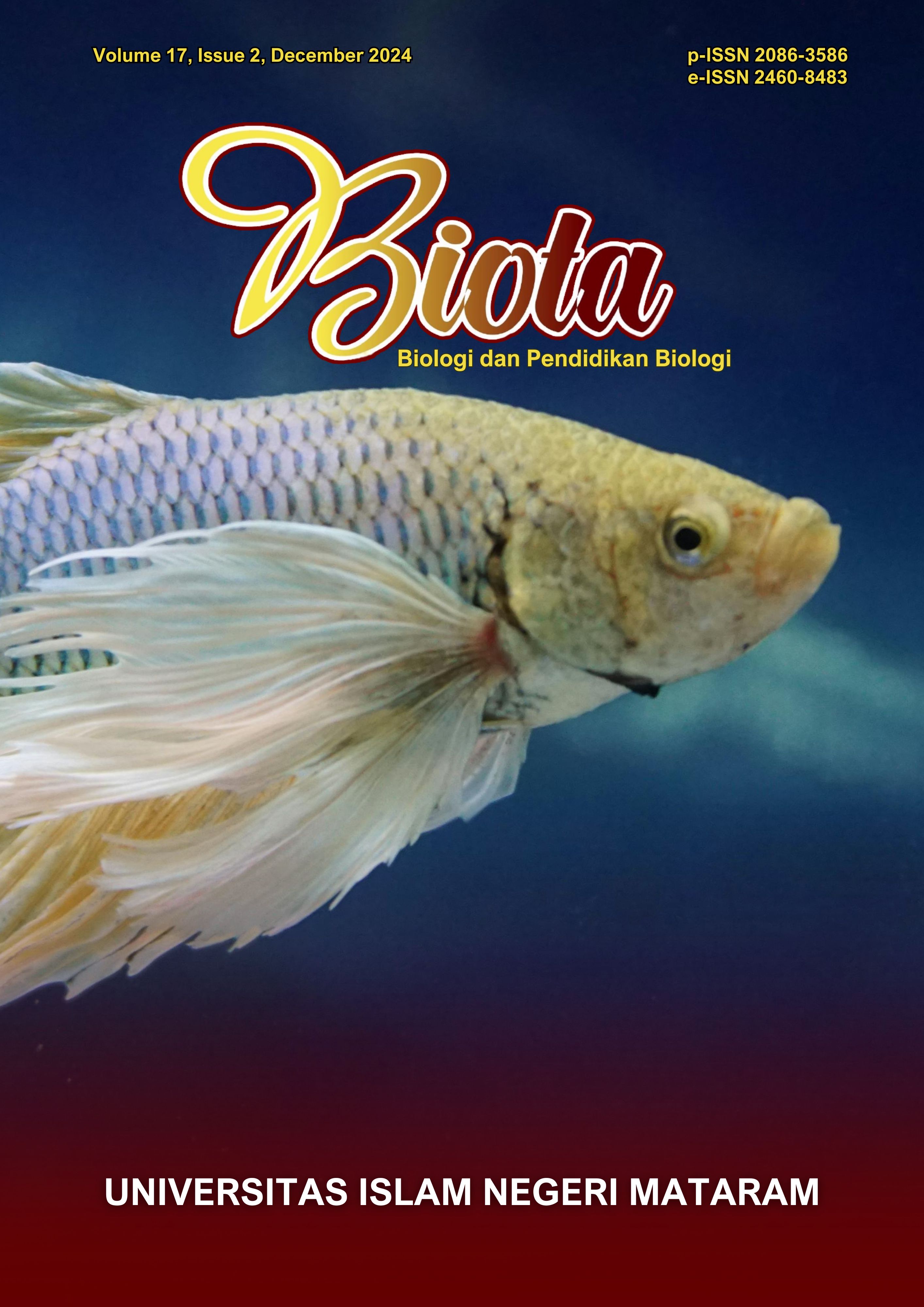Hatching Ratio and Larval Development of Aedes aegypti Eggs in Different Growth Media
Main Article Content
Abstract
Aedes aegypti is a mosquito species primarily known as the vector for dengue fever. The Hatching and development larval of Aedes agypti are crtical factors in mosquito control strategies and reducing dengue fever transmission. This study aims to investigate the effects of different water media on the hatching rate and development of Aedes aegypti from egg to adult stage. Three type of water from well water, treated tap water (PDAM) and staw soaked water were used in the experiment. The selection of water sources was based on their distinct physical and chemical properties, representing common environmental condition where Aedes aegypti may breed. Straw soak water was incorporated to simulate organic rich aquatic environments, often characterized by the presence of decomposing plant material. Such conditions are known provide a nutrient rich medium that facilitates mosquito egg hatching and larval development. Eggs were placed in each water type, and observations were carried out at hatching rate and larval development. The result revealed that the straw soaked water had the highest hatching rate 100% and the development time 6 days from egg to adult, well water show a hatching rate 67% with a longer development period of 7 days and no hatching and larval developmet in tap water (PDAM). This study shows that various types of water media affect the hatching success and developmental rates of Aedes aegypti. However, these effects are limited to the specific water types used in the experiment and should not be assumed to apply to all water quality conditions. Future research is recommended to explore other water quality parameters and their potential impact on the mosquito life cycle
Article Details

This work is licensed under a Creative Commons Attribution-ShareAlike 4.0 International License.
References
Arévalo-Cortés, Andrea, Yurany Granada, David Torres, and Omar Triana-Chavez. 2022. “Differential Hatching, Development, Oviposition, and Longevity Patterns among Colombian Aedes aegypti Populations.” Insects 13(6).
Budiman et al. 2021. “Essential Oil as a New Tool for Larvicidal Aedes aegypti: A Systematic Review.” Gaceta Sanitaria 35: S459–62. https://doi.org/10.1016/j.gaceta.2021.10.074.
Buhler, Claudia et al. 2019. “Environmental Methods for Dengue Vector Control – A Systematic Review and Meta-Analysis.” PLoS Neglected Tropical Diseases 13(7): 1–15.
Couret, Jannelle, Ellen Dotson, and Mark Q. Benedict. 2014. “Temperature, Larval Diet, and Density Effects on Development Rate and Survival of Aedes aegypti (Diptera: Culicidae).” PLoS ONE 9(2).
Fahri, Sukmal, Susy Ariyani, Gustomo Yamistada, and Eka S. Manulang. 2019. “Hatchability of the Eggs Aedesspp in Clean and Polluted Water.” KnE Life Sciences 2019: 134–40.
Imam, Hashmat, Ghulamuddin Sofi, Zarnigar, and Seikh Aziz. 2014. “The Basic Rules and Methods of Mosquito Rearing (Aedes aegypti).” Tropical Parasitology 4(1): 53.
Mackay, Andrew J. et al. 2023. “Larval Diet and Temperature Alter Mosquito Immunity and Development: Using Body Size and Developmental Traits to Track Carry-over Effects on Longevity.” Parasites and Vectors 16(1): 1–13. https://doi.org/10.1186/s13071-023-06037-z.
Pradani, Firda Yanuar, Rahayu Nirmatul Mutmainah, and Sela Marlina. 2023. “Description of the Behavior of Aedes aegypti Mosquito Laying Eggs in Water Contaminated with Animal Feces and Soil.” Mukhtabar : Journal of Medical Laboratory Technology 1(1): 6–13.
Soares-Pinheiro, V. C., W. Dasso-Pinheiro, J. M. Trindade-Bezerra, and W. P. Tadei. 2017. “Viabilidade de Ovos de Aedes aegypti (Diptera, Culicidae) Em Diferentes Condições de Armazenamento Em Manaus, Amazonas, Brasil.” Brazilian Journal of Biology 77(2): 396–401.
Souza, Raquel Santos et al. 2019. “Microorganism-Based Larval Diets Affect Mosquito Development, Size and Nutritional Reserves in the Yellow Fever Mosquito Aedes aegypti (Diptera: Culicidae).” Frontiers in Physiology 10(APR).
Suwartawan, I. Gede Dedy et al. 2022. “Life Cycle of Aedes aegypti Based on Acidity Variation of Domestic Sewage Water.” Southeast Asian Journal of Tropical Medicine and Public Health 53(Supplement 2): 348–65.
Thia Prameswarie et al. 2023. “Aedes aegypti Hatchability and Larval Development Based on Three Different Types of Water.” Majalah Kesehatan Indonesia 4(1): 27–32.
Tsegaye, Arega et al. 2023. “Anopheles Larval Habitats Seasonality and Environmental Factors Affecting Larval Abundance and Distribution in Arjo-Didessa Sugar Cane Plantation, Ethiopia.” Malaria Journal 22(1): 1–12. https://doi.org/10.1186/s12936-023-04782-1.
World Health Organization. Dengue-Global Situation. 2024. https://www.who.int/emergencies/disease-outbreak-news/item/2024-DON51

